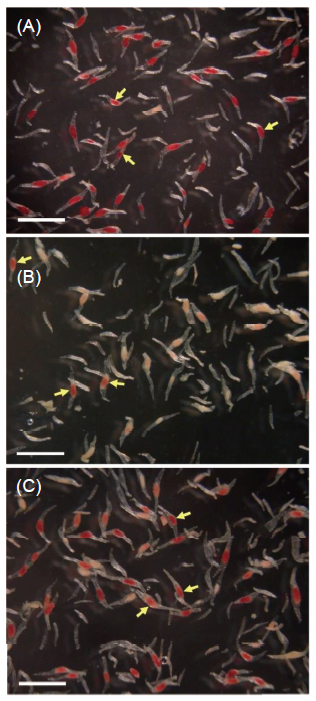All issues

Author:Rung-Yi Wu, Ching-Ping Lin, Ting-Fang Hsieh, Keng-Chang Chuang, Ting-En Dai, and Yu-Sen Chang*
Abstract:
Desiccation method has been successfully applied for the cryopreservation of Bletilla formosana seeds (Orchidaceae). This study investigated the effects of cryostorage duration on the viability of B. formosana and Phalaenopsis aphrodite subsp. formosana seeds after cryopreservation. After 24 h desiccation by silica gel and cryopreservation for 48 mo, B. formosana seeds still remained high germination percentage (87.7%) and higher than fresh seeds. Phal. aphrodite subsp. formosana seeds could retained significant higher germination percentage (100.0%) than fresh seed treatment (74.6%) after cryopreservation for 15 mo. The plantlet from cryostoraged seeds could grow and develop well. The germination percentage of dried and cryopreserved seed for 24 h was higher than that of fresh seeds after cryopreservation. Under scanning electron microscopy, it is clear that immersing seeds in liquid nitrogen (LN) induces breakage in the seed coat, then cracks in the seed coat provide channels that facilitate hydration and may increase germination. The technique could be applied for the pretreatment prior to cryopreservation of Phaius tankervilleae polllen, Phal. aphrodite subsp. formosana, Vanda lamellata and Vanda denisoniana seeds. The results showed that the germination percentage of freshly harvested pollen of P. tankervilleae was 81.4%, pollens directly placed in LN was low (25.4%) after thawing. However, the germination percentage increased to 81.0% for seeds dried with silica gel for 24 h prior to cryopreservation. In the case of seed preservation, the water content of V. lamellata fresh seeds was 34.6%, then decreased to 4.2% after desiccation for 24 h. The germination percentage of Phal. aphrodite subsp. formosana, V. lamellata and V. denisoniana fresh seeds were 77.5, 93.8 and 100.0%, respectively. The germination percentage of seeds that were directly placed in LN was low (0.0, 0.0 and 1.6%) after thawing, instead, the percentage increased to 88.0, 100.0 and 100.0% for seeds dried with silica gel for 24 h prior to cryopreservation for 24 h, respectively. These findings demonstrate that the seeds of V. lamellata exhibit a high tolerance toward desiccation and is suitable to be preserved at low temperature for long-term, and can be considered as an orthodox seed storage. Therefore, silica gel desiccation could be also applied for P. tankervilleae pollens, Phal. aphrodite subsp. formosana seeds, V. lamellata seeds and V. denisoniana seeds prior to cryopreservation.
Key words:Orchid, Desiccation method, Genetic resource, Preservation for long-term
Download:![]() PDF Links
PDF Links
- 1. Using Digital Soil Mapping to Predict Soil Organic Carbon Stocks in Zhuoshui River Basin
- 2. Taxonomic Review of the Genus Asiophrida Medvedev, 1999 in Taiwan (Insecta: Coleoptera: Chrysomelidae: Galerucinae: Alticini), with Notes on Biology
- 3. Development of a Technique for Forecasting (or Pre-Detection) Anthracnose Disease Incidences of Green Mature Bagging Mango Fruits
 Submit your manuscript
Submit your manuscript
 Guide for authors
Guide for authors